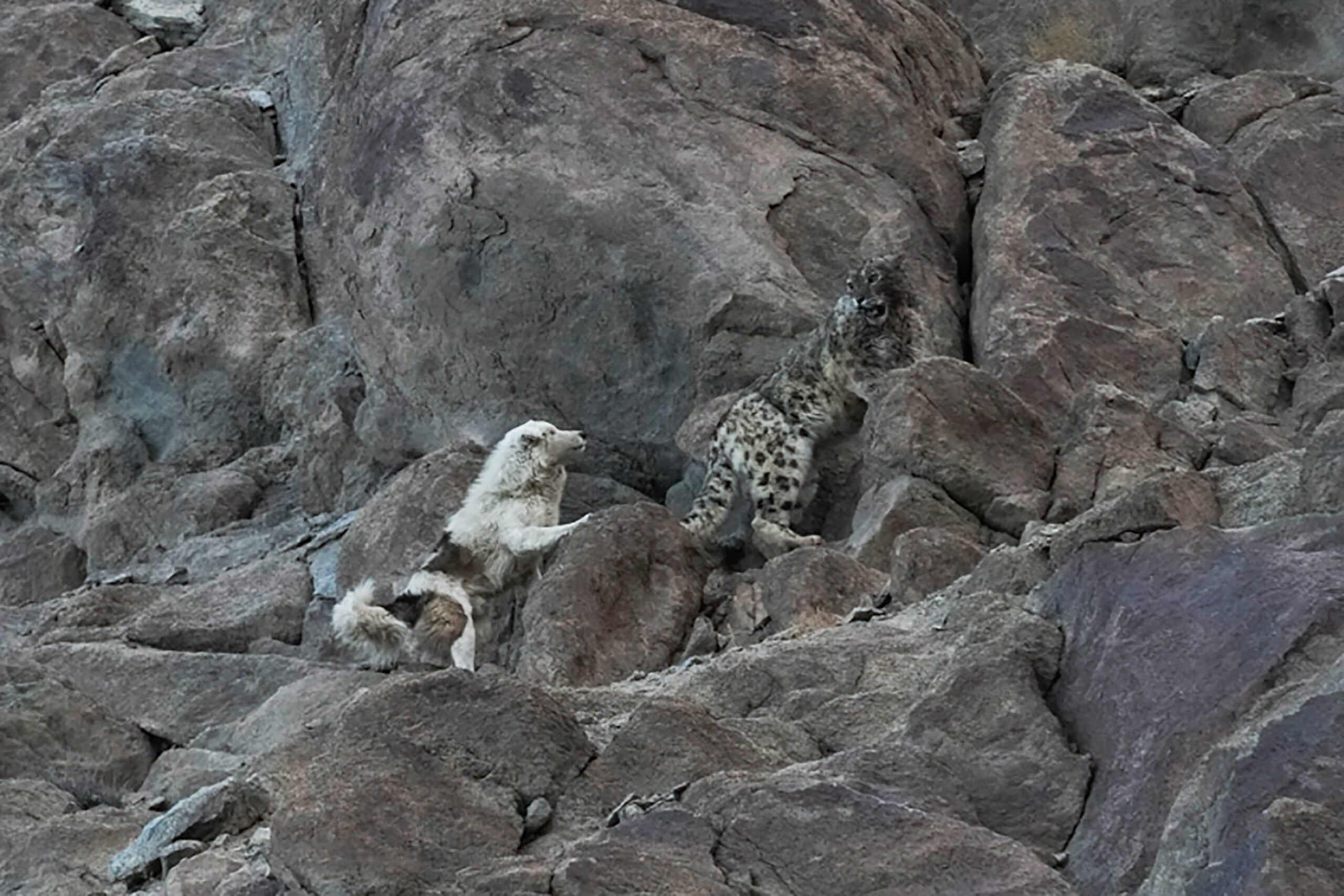Adapted to live in some of our planet’s most inhospitable mountainous regions, snow leopards (Panthera uncia) are the ultimate mountain climbers and an iconic big cat. A recent camera trapping study found that India is home to the most dense population of the black and white carnivores on Earth and most live in a remote northern region of the subcontinent. Here, they also appear to co-exist alongside rural communities, where they are respected by local human populations. The findings are detailed in a study published May 7 in the open-access journal PLOS One.
Snow leopards are found in mountainous regions across 12 Asian countries: Afghanistan, Bhutan, China, India, Kazakhstan, Kyrgyz Republic, Mongolia, Nepal, Pakistan, Russia, Tajikistan, and Uzbekistan. Their signature fur acts as natural camouflage against the snowy mountains, where they prey on a variety of sheep, ibex, hares, marmots, and pika.

In order to effectively conserve this vulnerable species, researchers need solid data on their population size and where they are living. However, the remote and rugged terrain that they call home and their notoriously shy nature makes this difficult.
In this new study, a team from the Department of Wildlife Protection in northern India’s Ladakh Union Territory assessed the snow leopard population across almost 23,000 square miles of landscape. The team started by looking for the tell-tale signs of snow leopards–footprints, scat, and scratch marks. They also surveyed for large carnivores like brown bears and lynx and wild herbivores and livestock.
Next, they set up 956 camera traps along about 3,300 square miles occupied by the snow leopards. These non-invasive cameras are used to help scientists estimate animal populations across territories.
“To photograph snow leopards’ foreheads, we had to make them pose in front of our cameras,” the team wrote in a statement. “This was done by spraying a small amount of perfume just below the cameras that were deployed near their favored scent marking rocks on the high ridge tops. The curious leopards lower their heads to smell the novel smell and we have our prized photos!”

Finally, they used artificial intelligence to analyze the photos and identify individual snow leopards by their distinct patterns of markings on their foreheads. This method called “fingerprinting” uses a special pattern recognition software to look at the spot patterns and store them in a database. This way, scientists can compare it with other snow leopard photos and come up with matches.
“This reduced our work many fold and improved the accuracy of correct individual identification that is crucial for population estimation using statistical models,” the team says.
With this data, the team estimates that Ladakh is home to 477 snow leopards, or 68 percent of India’s total population. The density varied between one to three snow leopards per 38 square miles. According to these results, Hemis National Park has the highest density of snow leopards recorded anywhere on Earth.
Additionally, 61 percent of snow leopards in Ladakh co-exist right alongside human populations. The resource-rich grasslands with a moderate climate and complex terrain tended to have a higher number of snow leopards, likely due to more prey and less human disturbance.
[ Related: Mountain lions in Los Angeles become night owls to avoid humans. ]
According to the team, this method of tracking and monitoring snow leopards could be used to regularly monitor these elusive big cats around the globe. They also generated a national photo library of snow leopards, which can help conservationists who monitor animal poaching and trafficking.
The team believes that multiple factors play into this wide distribution and high population density of snow leopards in Ladakh. Here, the animals have abundant prey, rugged and remote landscapes to live on, low human population density, and a culture of deep respect for wildlife among local communities.
“The deep-rooted reverence for wildlife among Ladakh’s communities, combined with the economic benefits from snow leopard tourism and conflict management strategies, helps sustain some of the world’s highest snow leopard densities—a model that could be adapted and upscaled across the species’ range,” the team concludes.


